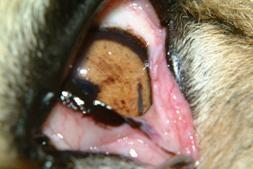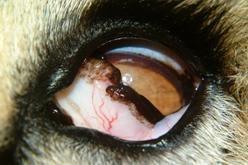
4 minute read
Blind
By Chloe’ Lewis
Big cats are among the most beautiful and fierce predators on earth. Found all over the world, these powerful felines possess unparalleled strength and master hunting skills—they are the true royalty of the wild. Among these dominant hunters, the cheetah takes the cake as being the fastest of all the big cats. Cheetahs—the most unique and specialized of the big cats—are aerodynamically built for speed, with their linear bodies and long legs enabling them to reach up to seventy miles per hour. Their large eyes are positioned for maximum binocular potential, allowing the cheetah to easily lock onto the target and commence the chase. However, in the heartlands of Africa, the fastest land mammal on earth has gone blind.
Early in 2013, researchers at the Africat Foundation in the South African country of Namibia released critical information regarding a devastating blow to Namibia’s cheetah population. These cheetahs can no longer kill. They are going blind. Researchers at Africat began to notice that some cheetahs are developing a mysterious white haze that is spreading across their cornea and ultimately rendering them completely blind. This mysterious problem has now become an epidemic, sweeping across the Namibian cheetah population. Now blind, the cheetahs of Namibia are unable to hunt, causing a devastating domino effect. No vision, no hunt. No hunt, no food. No food, no survival and reproduction. Extinction.
While undergoing their annual health screening at Africat, the cheetahs exhibited a high incidence of ocular trauma ranging from mild scarring of the lids and/or cornea, to mature cataracts, to severe endophthalmitis (inflammation of the internal coats of the eyes), and phthisis bulbi (a shrunken non-functional eye). Strangely enough, big cat blindness is not new to this country. In 1997, four cheetahs underwent ocular examinations and were presumed to be blind; the two young cheetahs had mature cataracts while the two adults were found to have severe signs of ocular trauma, including lid and cornea scar tracts, and mature cataracts. Following appropriate care and treatment, all four of them underwent successful cataract extraction. But these findings prompted an investigation into the cause of the cataracts in the adult wild captured cheetahs that is still continuing today. Blindness in Namibian cheetahs hasn’t reached epidemic proportions until now.
After the first 182 wild cheetah eyes were examined, it was shown beyond a doubt that there is a high incidence of ocular trauma in the Namibian cheetahs. The cause of this epidemic is the big question. Why is it that an overwhelming number of cheetahs in the Namibian population have suffered severe eye trauma to the point of eventual blindness? Researchers looked at the issue from many angles. A number of theories have been presented, and only one has been widely accepted—a theory concerning shifting land use in Namibia.
The unique thing about Namibian cheetahs is that unlike most other wild African cheetahs, they live and are forced to thrive in bush encroached areas—a habitat that does not meet their specific needs. Typically, cheetahs throughout Africa and Asia thrive in vast open areas that are essential for tracking and hunting prey across long distances. However, this type of habitat has been continuously declining in Namibia as grassy lands are increasingly converted to woody vegetation in a process known as bush encroachment. . Researchers have determined that the trauma to the Namibian cheetahs has been the result of thorn or foliage damage to sensitive eye components as a result of the cheetahs hunting in bush encroached habitat.

Currently, the vast majority of the wild Namibian cheetah population impacted by this epidemic is being tracked down and taken in for observation and surgery. It will take time as tracking and capturing one of the fiercest and fastest hunters in the world is not an easy task. What can be done to prevent something like this from happening again? Unfortunately, the culprit in this case is bush encroachment, which also affects the agricultural productivity and biodiversity of the African savannahs. Current research on the exact mechanisms that contribute to bush encroachment is still incomplete. Until then, it seems researchers working with Africat in Namibia will have to come up with their own temporary defenses to battle back the effects of bush encroachment. Otherwise, they will find themselves with a long line of blinded cheetah patients, more deaths, and the possibility of the wild cheetah population facing extinction. In the meantime, we can only hope nature will play in favor of the cheetahs; they will have to either adapt or die.




Sources:
http://www.okonjima.com/content/Research_at_Africat
http://www.africat.org/component/content/article/37-news/news-2013/356-conservation-in-namibia
http://www.cheetah.org/?nd=cheetah_facts
http://www.bushencroachment.com/bush-encroachment-african-savannas.html
http://www.earthwatch.org/europe/expeditions/exped_experience/exped_blogs/blog_marker










